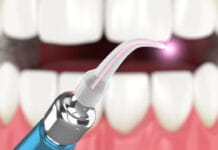Every year, the dental industry makes strides to improve knowledge and stay on the cutting edge. Enhancing patients’ experiences through new technologies, improved business operations, and an optimal standard of care in dentistry are a few examples of how the dental industry moves forward year after year.
For example, in 2019, the dental industry advocated for patient safety in attempting to curtail unsupervised orthodontic treatments and introduced dental therapists in underserved dental populations. Technology in dentistry has moved forward with the increased use of digital impressions, artificial intelligence, and laser dentistry credentials for dental hygienists.
Other advancements in 2019 improved patient care and industry costs, such as increased opioid awareness and dental service organizations.
ADA vs. DIY Orthodontics
Two months after filing a petition with the U.S. Food and Drug Administration about a DIY orthodontic company, the American Dental Association (ADA) issued a complaint in writing to the Federal Commission’s Bureau of Consumer Protection. The ADA was following up on an assertion that the company’s business practices violated the FDA’s “by prescription only” restriction.1
The complaints were brought about due to the ADA’s concerns “for patient safety and to enable consumers to take action when negative treatment outcomes occur,” according to Dr. Jeffery Cole, the ADA president.1
The ADA advocating for patient health is just one example of the positive actions of the dental industry.
Dental Therapists
The dental therapist profession was introduced in more states to address the need for adequate dental care in rural and underserved areas. The dental therapist is a mid-level dental provider that can initiate limited treatment under the supervision of a dentist in a clinical setting.
However, the ADA has shown opposition to the initiation of the dental therapist practice, stating that underserved communities can be addressed by increasing Medicaid funding and community health reach programs.2 Despite the ADA’s efforts to curtail the dental therapist practice, many states have moved forward and implemented the use of dental therapists in their communities.
In 2019, six states − Connecticut, Michigan, Nevada, New Mexico, Idaho, and Montana − passed the legislation allowing the practice of dental therapy. These states join Oregon, Minnesota, Washington, and Alaska. However, in other states, dental therapist bills are still pending.3
Digital Impressions
Digital impression scanners were first introduced in the 1980s and have increased their presence in dental clinics nationwide. Digital impressions, which capture images in three-dimensions to create a model used in orthodontics and prosthetics, increase efficiency, accuracy, and patient comfort by decreasing the need for remakes caused by impression model discrepancies and material failure.
Furthermore, digital impressions reduce the need for laboratory model materials and eliminate disinfection concerns and storage concerns.4 Despite the initial cost of the scanners, digital impressions have integrated itself in the dental community at a rapid rate.
Artificial Intelligence in Dentistry
Artificial intelligence (AI), which dates to 1956, has increasingly invaded modern American life in the form of “digital assistants like Alexa and Siri.”5 The recent introduction to AI caries detection is accessible to dentists today.
The advantages of AI use in dentistry include lack of bias or premature judgment in diagnosis, less fatigue, and increased speed. However, a negative effect is that it reduces the personal patient-clinician relationship.
AI dentistry has introduced itself in the dental field in 2019 with digital assistant’s voice instructions and scheduling programs to optimize practice management.5 This breakthrough will most likely lead to more advancements in the future and could likely be used to decrease periodontal disease through bone loss detection, provide more accurate caries detection, and assist in more effective scheduling.
Laser Dentistry
Dentistry has been implementing laser dentistry since 1994 for hard and soft tissue treatments. Although approved by the Food and Drug Administration (FDA), the American Dental Association (ADA) has yet to brand any lasers with the seal of approval.6
The use of a dental laser by dental hygienists has gained popularity for the treatment of nonsurgical soft tissue management. Although only 26 states have approved the use of a dental laser by hygienists, its increased popularity should encourage more states to follow.7
Dental Service Organizations (DSO)
Dental service organizations (DSO) consists of a group of private practice dentists that contract an independent business support center. Since the adoption of the Affordable Care Act and the expansion of Medicaid, DSOs have increased in popularity. The DSO blueprint benefits individual practices by reducing dental costs, thus reducing patient fees and offering a more competitive dental market.8
Opioid Use
To address the opioid use and misuse for pain management, the American Dental Association (ADA) implemented the Interim Board Policy on Opioid Prescribing. The policy includes mandatory continuing education on opioids for dentists as well as limiting opioid dental prescriptions to seven days, as recommended by the Center for Disease Control and Prevention guidelines, and by promoting prescribing dentists to register with the Prescription Drug Monitoring Program (PDMP).9
The Journal of American Dental Association released a study indicating that 400mg of ibuprofen in addition to 1000mg of acetaminophen is more effective than opioids for pain relief. Such efforts have helped to fight the opioid crisis which plagued the news in 2019.10
In Summary
In 2019, the dental community focused on improving the profession by implementing new techniques and technology, curtailing high patient costs, as well as advocating for those patients subject to subpar treatments. Although these examples are only the tip of the iceberg, the future of dentistry looks promising as the profession moves forward to heighten dental awareness while keeping with the times.
Now Listen to the Today’s RDH Dental Hygiene Podcast Below:
References
- Solana, K. Association files complaints with FTC, FDA against SmileDirect Club. American Dental Association. July 12, 2019. Retrieved from https://www.ada.org/en/publications/ada-news/2019-archive/july/association-files-complaint-with-ftc-fda-against-smiledirect-club
- ADA responds to news coverage of dental therapists. American Dental Association. February 21, 2017. Retrieved from https://www.ada.org/en/press-room/news-releases/2017-archives/february/ada-responds-to-news-coverage-of-dental-therapists
- Chapman, H. States increasingly allowing dental therapists to practice, which can help bring more dental care to rural areas. The Rural Blog. August 19, 2019. Retrieved from https://irjci.blogspot.com/2019/08/states-increasingly-allowing-dental.html
- Navar, S. Mahadevan, R. A Paradigm shift in the concept for making dental impressions. Journal of Pharmacy and BioAllied Sciences. 2015; 7(Suppl 1): S213-S215. Retrieved from https://www.ncbi.nlm.nih.gov/pmc/articles/PMC4439674/
- Gupta, S. The Future of Artificial Intelligence in Dentistry. Healthcare in America. August 20, 2018. Retrieved from https://healthcareinamerica.us/the-future-of-artificial-intelligence-in-dentistry-114e04fc4e8f
- Friedman, M. Laser Use in Dentistry. WebMD. January 15, 2018. Retrieved from https://www.webmd.com/oral-health/guide/laser-use-dentistry
- States that allow laser use by dental hygienists. Academy of Laser Dentistry. April 16, 2018. Retrieved from http://www.laserdentistry.org/uploads/files/Reg%20Affairs/Regulatory%20Chart%20YES%204_2018%20-%20YES.pdf
- Dental Service Organizations. Wikipedia. Retrieved from https://en.wikipedia.org/wiki/Dental_Service_Organizations
- Garvin, J. ADA adopts interim opioid policy. American Dental Association. March 26, 2018. Retrieved from https://www.ada.org/en/publications/ada-news/2018-archive/march/ada-adopts-interim-opioids-policy
- Garvin, J. April JADA examines opioids in dentistry. American Dental Association. March 26, 2018. Retrieved from https://www.ada.org/en/publications/ada-news/2018-archive/march/april-jada-examines-opioids-and-dentistry











